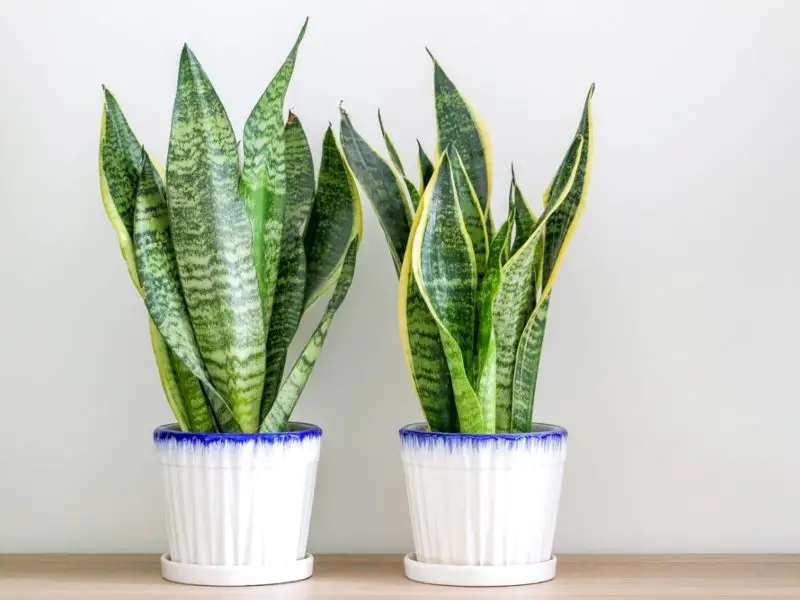Growing plants at home isn’t just about decorating your space—it’s about creating a calm, living sanctuary that breathes with you. And few houseplants offer the elegance, strength, and simplicity of the snake plant. With its bold vertical lines and rich green patterns, the snake plant stands tall like a quiet guardian, purifying your air and grounding your space in nature’s quiet rhythm.
Whether you’re a seasoned plant lover or just starting your indoor garden journey, learning how to grow a snake plant at home is one of the most rewarding things you can do. It asks for very little but gives back so much—beauty, resilience, and a soothing presence that transforms even the smallest corner of your home.
Choosing the Right Variety of Snake Plant

Snake plants come in many shapes, sizes, and colors, making it easy to find one that fits your space and style. Choosing the right variety depends on your light conditions, available space, and aesthetic preference.
For low-light areas or indoor spaces, go with Sansevieria trifasciata ‘Laurentii’, known for its tall green leaves with yellow edges, or ‘Zeylanica’, which features dark green, wavy stripes and handles low light well. ‘Moonshine’, with its silvery, pale green leaves, is also perfect for shaded rooms.
If you have bright or sunny areas, consider Sansevieria cylindrica, which has round, upright leaves that thrive in strong light. ‘Bantel’s Sensation’ offers striking vertical leaves with white stripes and looks best in bright, indirect light.
For compact or tabletop settings, varieties like ‘Hahnii’ (Bird’s Nest) and ‘Golden Hahnii’ form low, rosette-like clusters ideal for shelves, desks, or small pots.
In warm outdoor climates (USDA zones 9–11), larger types like Sansevieria masoniana (Whale Fin) or Sansevieria kirkii ‘Starfish’ do well in partial to full sun and add a sculptural look to patios or outdoor containers.
By matching the variety to your environment, you’ll ensure healthy growth and the best visual impact for your space.
Finding the Best Spot in Your Home
Snake plants are highly adaptable, but choosing the right spot helps them thrive. They prefer bright, indirect light, such as near an east- or west-facing window. While they can tolerate low light, growth will slow, and colors may fade over time.
Avoid placing the plant in direct, harsh sunlight for extended hours, as this can scorch the leaves. If natural light is limited, snake plants also do well under fluorescent or LED grow lights, making them perfect for offices or darker rooms.
Good airflow is also important—place your snake plant in a well-ventilated area, but away from cold drafts, air conditioning vents, or heating units. A steady, moderate environment with consistent light will help your plant stay healthy and attractive year-round.
Choosing the Right Pot and Soil
Watering is one of the most important aspects of snake plant care—and also the easiest to get wrong. These plants are drought-tolerant and much more prone to overwatering than underwatering.
To water correctly, always wait until the top 2–3 inches (5–7 cm) of soil are completely dry before watering again. You can check this by sticking your finger into the soil or using a moisture meter. When in doubt, it’s safer to wait a few more days than to risk watering too soon.
During the active growing season (spring through early fall), you may need to water every 2–3 weeks, depending on your home’s humidity, temperature, and light. In winter, the plant enters a dormant phase and needs far less moisture—often just once a month or less.
Always use a pot with good drainage, and be sure to empty any excess water from saucers or decorative containers. Snake plants do not tolerate sitting in soggy soil, which can quickly lead to root rot, a common killer of otherwise healthy plants.
Also, try to water directly at the soil level, avoiding the center of the plant where water can collect and cause the base to rot. By following a light, consistent watering routine, your snake plant will stay strong, upright, and healthy.
Providing the Ideal Temperature and Humidity
While snake plants are known for surviving in poor soil, giving them the right nutrients can significantly enhance their health, color, and growth rate. Proper feeding helps the plant develop stronger leaves and improves resistance to stress and disease.
During the growing season—typically spring through early fall—feed your snake plant once a month using a balanced liquid houseplant fertilizer (such as 10-10-10 or 20-20-20). Always dilute the fertilizer to half strength to prevent overfeeding, which can cause root burn or leaf discoloration.
Avoid fertilizing in late fall and winter, when the plant enters a period of dormancy. Applying fertilizer during this time can overwhelm the roots and harm the plant rather than help it.
If you prefer a more natural approach, organic options like compost tea, worm castings, or a diluted seaweed extract also work well and release nutrients slowly over time.
Keep an eye on your plant’s response after feeding. Healthy new growth, vibrant leaf color, and upright structure are good signs that your snake plant is getting the nutrients it needs. With consistent, gentle feeding, your plant will thrive and maintain its striking appearance throughout the year.
How to Propagate Snake Plants at Home
Propagating snake plants is easy and rewarding, with several methods to choose from. The most common and beginner-friendly way is leaf cuttings. Simply cut a healthy leaf near the base, let it dry for a day or two to callous, then place it in water or well-draining soil. In water, roots typically form within 2–4 weeks; in soil, keep it slightly moist until new growth appears.
Another reliable method is division. Remove the plant from its pot and gently separate the root ball into sections, each with at least one healthy leaf and root system. Replant each section in its own pot.
Propagation works best in warm, bright, indirect light. Be patient—snake plants grow slowly, but with time, your cuttings will develop into healthy new plants perfect for gifting or expanding your indoor garden.
Common Problems and How to Fix Them
Despite being one of the toughest houseplants, snake plants can still face a few common issues—most of which are caused by improper watering, light, or environmental conditions.
Yellowing or mushy leaves are usually a sign of overwatering or poor drainage. To fix this, allow the soil to dry out completely and check that the pot has drainage holes. If root rot is present, remove the plant, trim off damaged roots, and repot in fresh, dry soil.
Brown tips or edges can result from low humidity, underwatering, salt buildup from fertilizer, or exposure to cold drafts. Ensure consistent watering, avoid fertilizing too frequently, and keep the plant away from AC vents or open windows in winter.
Leaves falling over or drooping may indicate a lack of light or an overcrowded root system. Move the plant to a brighter spot and consider repotting if roots are circling tightly inside the container.
Pale or faded leaves often suggest the plant isn’t getting enough light. Relocate it to a brighter area with indirect sunlight to restore its color and vigor.
Pests like spider mites or mealybugs occasionally appear in dry indoor air. Wipe leaves with a damp cloth and treat infestations using neem oil or insecticidal soap.
Most snake plant problems are easy to correct once identified. Regular observation and small adjustments in care can keep your plant healthy and resilient year-round.
Cleaning and Maintaining Your Plant
Keeping your snake plant clean not only enhances its appearance but also supports healthy growth. Dust can block light absorption, so gently wipe the leaves every 2–4 weeks with a damp cloth or soft sponge to remove dirt and debris. Avoid using leaf shine products, as they can clog the pores.
Regularly inspect the plant for signs of pests like spider mites or mealybugs. If found, wipe affected areas with diluted neem oil or insecticidal soap. Trim away any yellow, damaged, or dead leaves at the base using clean scissors to encourage healthy new growth.
Rotate the pot every few weeks to ensure even light exposure, preventing the plant from leaning or growing unevenly. Also, remove dust or debris from the soil surface to discourage mold or fungus.
With just a little routine care, your snake plant will stay clean, vibrant, and thriving year-round.
Benefits of Growing Snake Plant Indoors
Snake plants offer a range of benefits that make them ideal for indoor spaces. First, they purify the air by removing toxins like formaldehyde, benzene, and xylene, making your home healthier. They’re also one of the few plants that release oxygen at night, which can improve sleep quality when placed in bedrooms.
In addition to air purification, snake plants are extremely low-maintenance, tolerating low light, irregular watering, and a wide range of indoor conditions. Their upright, architectural leaves add a modern, stylish touch to any room, complementing a variety of décor styles.
They also help increase humidity slightly, which can benefit skin and respiratory health, especially in dry environments. Plus, their resilience makes them perfect for beginners or anyone with a busy lifestyle.
FAQ: Common Questions About Growing Snake Plants Indoors
How often should I water my snake plant?
Watering frequency depends on your home’s environment. In spring and summer, water every two to three weeks, or when the top two to three inches of soil feel completely dry. In fall and winter, reduce watering to once every four to six weeks as the plant’s growth slows. Always check the soil before watering to avoid overwatering, which is the most common cause of root rot in snake plants.
Can snake plants survive in low light?
Yes, snake plants are highly tolerant of low-light conditions, making them ideal for bedrooms, bathrooms, and offices. However, in dim environments, their growth may slow, and leaf colors can fade. For best results, place them in bright, indirect light or use a grow light if natural light is limited. The more light they receive, the more vibrant and upright their foliage will be.
How can I propagate my snake plant at home?
Snake plants can be propagated in two main ways: by leaf cuttings or by division. To propagate by leaf cuttings, cut a healthy leaf, let it callous over for a day or two, then place it in water or well-draining soil until roots form. To propagate by division, remove the plant from its pot and gently separate root clumps, making sure each new section has both leaves and roots. Division is quicker and retains the original leaf patterns.
Why are the leaves turning yellow or mushy?
Yellowing or mushy leaves are typically signs of overwatering or poor drainage. First, stop watering and let the soil dry completely. Remove the plant from its pot and check the roots—if they’re black or soft, trim the damaged parts and repot the plant in fresh, well-draining soil. Make sure your pot has drainage holes and water only when the soil is dry to the touch.
Do snake plants really purify the air?
Yes, snake plants have air-purifying qualities. NASA studies show that they can absorb harmful toxins like formaldehyde, benzene, and xylene, which are commonly found in paints, cleaning products, and furniture. Unlike most plants, snake plants also release oxygen at night, making them an excellent choice for improving indoor air quality—especially in bedrooms.
Final Thoughts on How to Grow Snake Plant at Home
Learning how to grow snake plant at home is a rewarding experience for both novice and experienced plant lovers. Its resilience, beauty, and minimal care requirements make it an ideal houseplant for any lifestyle. By providing the right light, soil, and watering schedule, your snake plant will thrive and continue to purify your indoor air for years to come. With just a little attention, this hardy plant becomes a standout feature in any home.






